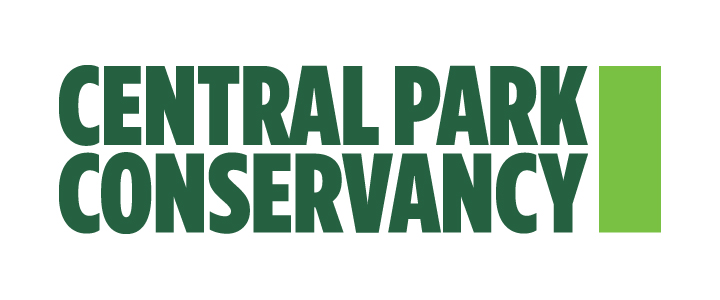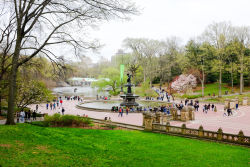Central Park
The Daily Plant : Thursday, August 21, 2003
CITY OF GLASS
Spring and fall bring transition: changing temperatures, fleeting flowers, dying leaves and migratory birds. Every passing season, New Yorkers can catch glimpses of flocks of Canadian geese soaring overhead, honking raucously. In recent weeks, the release of Jacques Perrin’s documentary Winged Migration has honed many city-dwellers’ cursory understanding of migratory birds. His sparsely-narrated film depicts the migrations of birds throughout the world, from North to South and back again. His movie’s innovative cinematography is dazzling; the film also defies speech – literally. With the exception of a few explanatory words from the director, we hear only Bruno Coulais’ soundtrack, the myriad voices of the birds and the natural sounds of the landscapes over which they pass as we watch these birds’ epic migrations.
What this film does not touch on, however, is an issue that has become of increasing importance to conservationists and birders alike: the hundreds of millions of bird deaths each year in the United States caused by the collision of birds and glass. The New York City Audubon Society’s newsletter, The Urban Audubon, recently ran an article about "Project Safe Flight," a program that seeks to rescue birds injured by collisions with glass and to educate the public about common-sense ways by which to reduce the number of bird fatalities, especially during the migratory season when such fatalities peak. According to Project Safe Flight, every year in the United States at least 100 million birds are killed by glass. Glass poses such a danger to birds because, by virtue of its transparency, a path may inaccurately appear unobstructed to a bird; glass allows birds to see plants inside of buildings and glass reflects natural objects like trees where birds might normally find refuge. Once a bird collides with glass, about 50% are killed outright, and many more succumb to natural predators. While pigeons have learned to maneuver around glass, migrating birds as well as local songbirds are thrown off by light emanating from buildings and building reflections.
Fortunately, there are some measures we can take to reduce the number of birds killed by glass. While these measures do not resolve the tensions between human habitats and flights paths of birds, they do mitigate the threat to some extent to birds. Sara Hobel, Director of the Urban Park Rangers, reports that Parks & Recreation is aware of the threat that our cityscape can pose to birds and, together with the New York Audubon and its New York City chapter, a grant proposal was submitted to the United States Fish and Wildlife Service to develop collaborative educational and habitat programs aimed at saving migratory birds. The Urban Park Rangers also partner with the New York City Audubon in ornithological programs aimed at teaching New York City’s youth about the role of birds in urban ecology.
Urban Park Rangers who find birds injured in parks bring them to the Animal Medical Center or other private centers for rehabilitation. If the bird is small and easily manageable, the Urban Park Rangers will personally nurse it back to health. Once rehabilitated, Parks & Recreation reintroduces the birds into the habitats where they were found. This past week offered a heartwarming tale of a felled mocking bird in a City park. A baby American Mockingbird was rescued by a patron in a Staten Island park and brought to the attention of the local Urban Park Rangers. They began nursing the small bird back to health, and all signs indicate that the mockingbird will soon return to our Staten Island parks to grace our ears with its sweet song.
While most New Yorkers lack the necessary expertise to care for birds themselves, there are some very simple things that we as a city and as individuals can do to reduce the threat of glass to birds. Corporations with skyscrapers can agree to turn their lights off at night, and they can install non-reflective glass, thereby enabling migrating birds to see the buildings rather than run into them. We, as individuals, can decorate the windows of our apartments and houses with designs that allow birds to discern otherwise transparent glass. The Fatal Light Awareness Program website offers a list of the top ten most effective ways to collision-proof your windows.
If you would like to learn more about this issue, you can visit the New York City Audubon Society’s website at www.nycas.org or the Fatal Light Awareness Program (FLAP) website at http://www.flap.org/.
Written by Dana Rubinstein
PARKS SOFTBALL TEAM TO LIGHT IT UP
With Parks & Recreation’s softball season entering the playoffs, teams will be breaking out the real power. Manhattan will be trying to stay on top but has a tough challenge from the first place Bronx team. Who knows, a surprise contender may even emerge. Good luck.
Final 2003 standings:
Bronx 7-0
Manhattan 6-1
Central Park 5-2
Arsenal North 3-4-1
Urban Park Service 3-4-2
Arsenal West 2-5
Zoo 2-5-1
Arsenal/5B 0-7
QUOTATION FOR THE DAY
"Happy days are here again,
The skies above are clear again:
Let us sing a song of cheer again,
Happy days are here again!"
Jack Yellen
(1892-1991)
Check out your park's Vital Signs
Clean & Safe
Green & Resilient
Empowered & Engaged Users
Share your feedback or learn more about how this park is part of a
Vital Park System

Know Before You Go
Anticipated Completion: Spring 2024
Anticipated Completion: Spring 2025

Contacts
Central Park Information: (212) 310-6600
Central Park Information (for the Hearing Impaired): (800) 281-5722
Belvedere Castle, The Henry Luce Nature Observatory: (212) 772-0210











